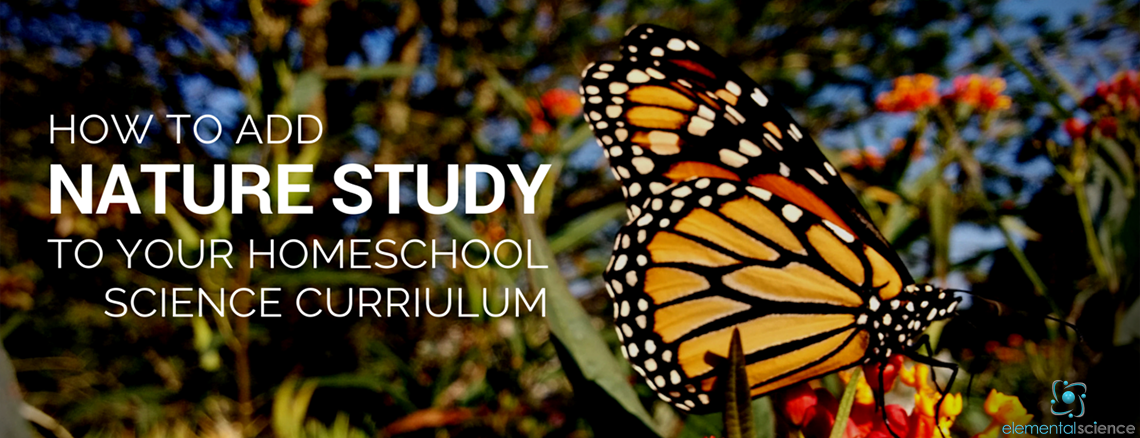FREE Shipping on all our products! (Please Note: Orders may experience a delay of a week or more in shipping due to the high volume of orders at this time of year.)
FREE Shipping on all our products! (Please Note: Orders may experience a delay of a week or more in shipping due to the high volume of orders at this time of year.)
How to Add Nature Study to your Homeschool Science Curriculum
November 17, 2015 3 min read

Where does nature study fit into a homeschool science curriculum?
Is it the centerpiece? Or just an afterthought?
Should it even be a part of your plan at all?
Nature study is a beneficial way to learn about science, especially those topics covered in biology and earth science. The true beauty of nature study is that it can awaken the scientific side of the brain in the same way that good book can awaken the imagination.
In other words, nature study helps the student to see science face-to-face, in the same way experiments can. There is so much a student can learn and appreciate the natural world.
So, where should nature study fit into your homeschool science plan?
Simply put - Nature study can be the core of your homeschool science curriculum OR nature study can be the icing on the cake.
What is nature study?
Before we dig into the meat of this post, I wanted to clarify what exactly nature study is.
Nature study is the study of the plants and animals around you, which can be found both inside and outside your home. It employs the power of observation and is a truly accessible way to study science.
The main purpose of nature study is to introduce your students to the science found in the world around them as you spark their desire to learn more.
How do you add nature study to your homeschool science curriculum?

So, how can you add nature study to your current homeschool science plan? Here are two options:
Option #1 - Take advantage of impromptu nature study opportunities.
This is by far the simplest way to add nature study into your week. Basically, you are taking advantage of the opportunity to study nature as it appears before you.
So, let's say you are outside playing in the backyard when you spot a caterpillar, you say:
“Hey kids look at this caterpillar I just found on the driveway. You see the way he walks along my hand. What does he feel like to you? Do you want to put him in a jar and go look him up on the internet to find out what kind of caterpillar he is?”
Once you get back inside, you can have your students write what they have learned about the caterpillar in their nature journal. Or you can have them share about the caterpillar at dinner that night if they are not big fans of writing.
Option #2 - Include nature study in your "Friday Fun Day" plan.
When our daughter was younger, we had what I like to call “Friday Fun Days”. On these days, we would do an art project, go to the library, and set aside some time for nature study.
I would plan out topics relating to what we were studying and research them before we head out that morning. Then, we would add to our nature journals in the field or after we returned home.
We have a series here called InstaScience that can help you as you plan out topics and prepare for a Friday nature study time.
In a nutshell
Some of our best memories of our studying science have been during our "extra" nature study time. So, whether you chose for nature study to enhance your current science curriculum with impromptu opportunities or Friday Fun Days, you can’t go wrong!
Feel free to share your experiences with nature study or to ask any questions you have in the comments below. I'll leave you with a bit of Pinspiration!

Also in Elemental Science Blog
How can we use one experiment for multiple ages?
June 06, 2025 4 min read

Is it possible to do only one experiment for homeschool science each week with multiple kids? Yes, but it will take some work. Click to get tips on how.
All About Experiment Variables for Hands-on Science and Science Fair Projects
April 12, 2025 2 min read

What variables are found in an experiment? And how can you know which is which? Click "Read More" to get the answers.
4 Easy Steps to Add Current Events into your Homeschool Science Plan
November 02, 2024 3 min read

Adding a current events study to a subject can increase the student’s interest as well as inform him or her of the latest advances in the field. Having a student read a relevant article or two each month will enhance what he or she is learning in a subject.
This month, I wanted to share with you all how to incorporate the latest scientific news into your studies.
Subscribe
Sign up to get the latest on sales, new releases and more …

